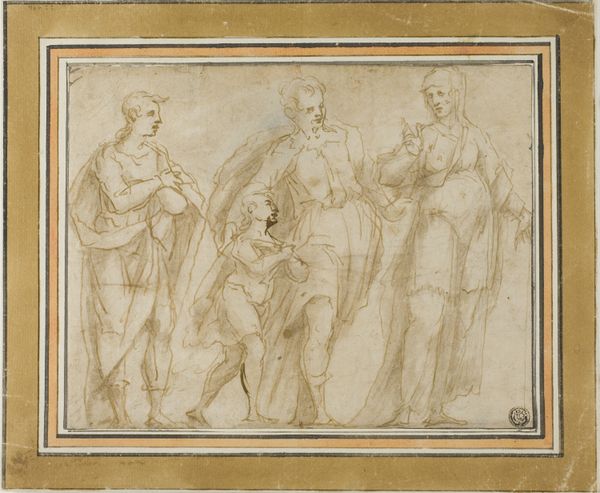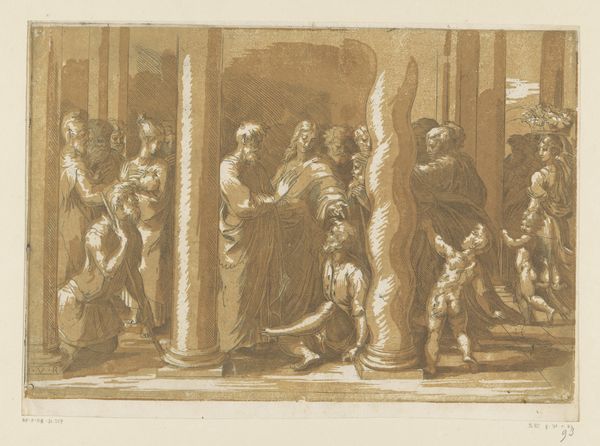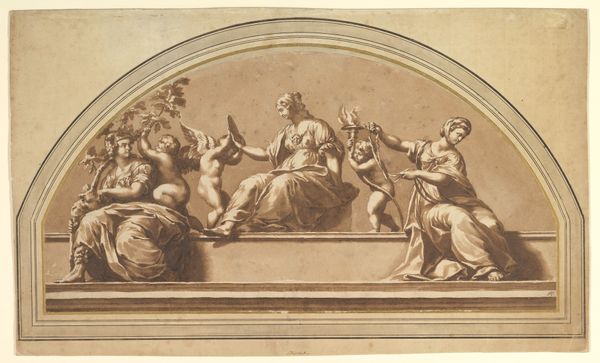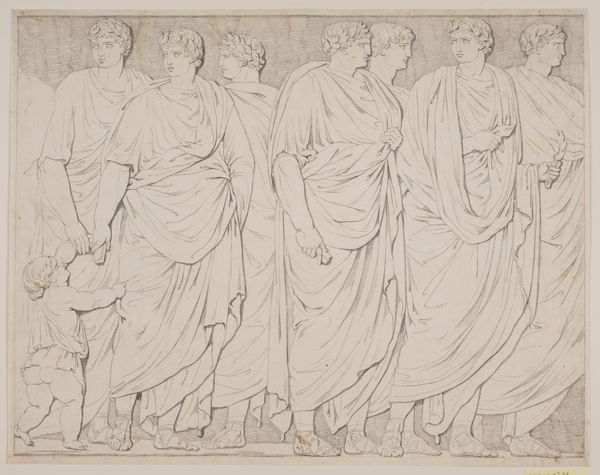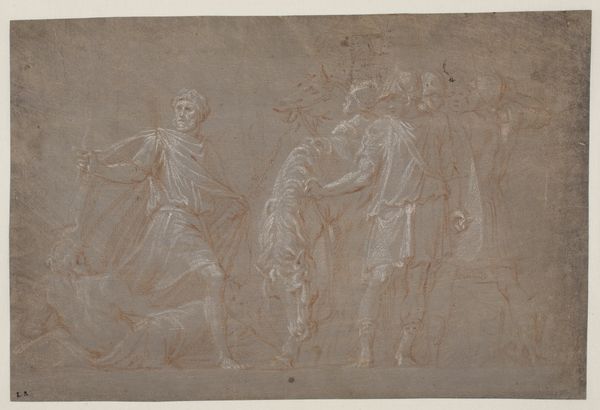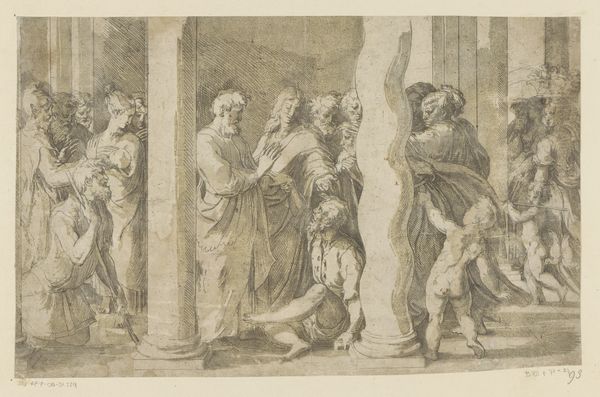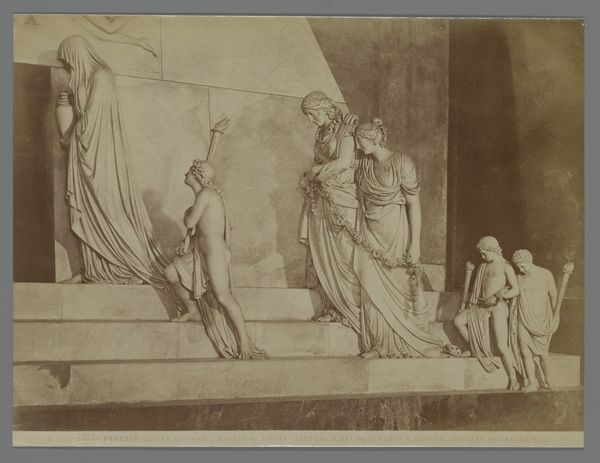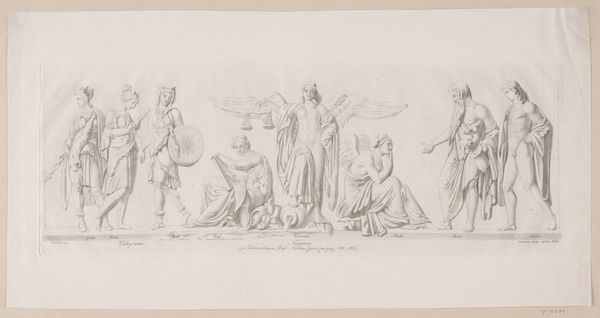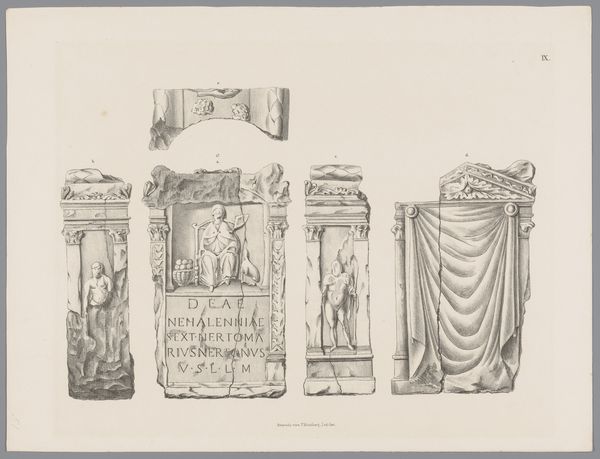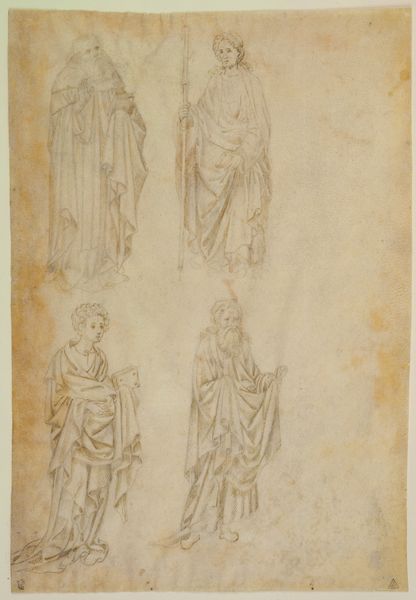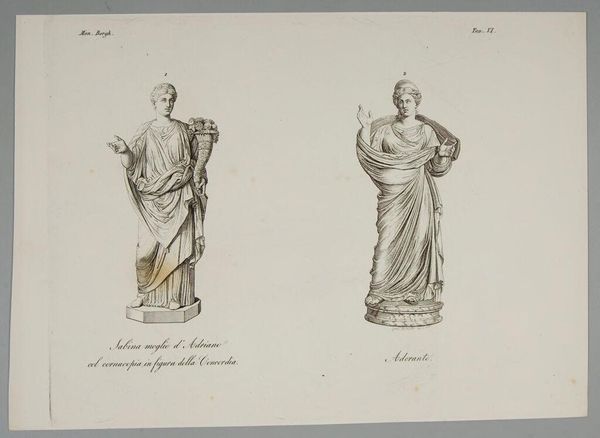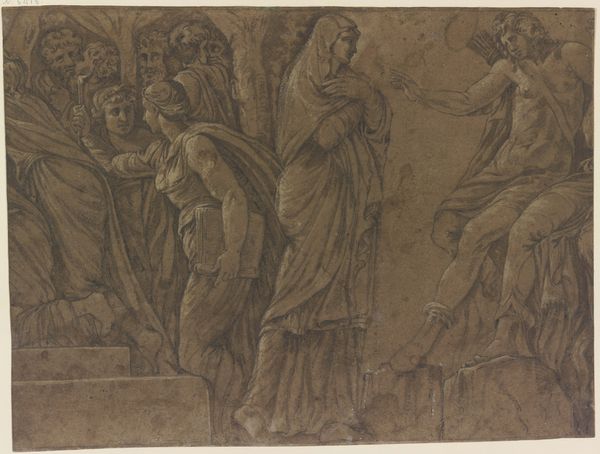
drawing, architecture
#
portrait
#
drawing
#
greek-and-roman-art
#
architecture
Dimensions: 346 mm (height) x 462 mm (width) (bladmaal)
Curator: This drawing is entitled "Karyatidehallen på Erecteion" by Jan Jacob Schenkel, likely created sometime between 1829 and 1900. It’s currently held here at the Statens Museum for Kunst. Editor: My first impression is one of somber dignity. The sepia tones lend a weight of history, and the figures stand with a quiet grace. Curator: Indeed. This rendering shows the Caryatid Porch of the Erechtheion, a temple on the Acropolis in Athens dedicated to both Athena and Poseidon. Consider the labor, not just to create the original sculptures, but also to translate this architecture onto paper, each line carefully laid. Editor: The Caryatids themselves, acting as architectural support, are so much more than just columns. They become symbols of female strength and endurance. Each holds her head high, burdened yet regal. The wreaths and gestures – what do they evoke for you? Curator: Beyond symbolism, I see social commentary, too. Consider the accessibility of art historical studies at the time of this work's production. How did one acquire such skills of rendering classical subjects and architecture? Was Schenkel producing a souvenir, a study for a larger project, or some act of love and appreciation? Editor: It's interesting you mention love. To me, these women almost act as priestesses or guardians. It's about cultural memory, about invoking the spirit of the ancients. Each one becomes a vessel, carrying the weight of their civilization. Curator: I think, also, of the act of drawing, itself a kind of material meditation. Schenkel had to have deeply engaged with the forms, studying each fold of drapery, the subtle curve of the neck. It's not simply documentation; it's a form of physical interaction across centuries. Editor: It truly makes one consider the many interpretations contained in this relatively simple rendering. The enduring symbolism combined with the work it takes to bring that symbolism into a drawing form makes the art memorable. Curator: Yes, it's about both the enduring power of classical imagery and the material effort required to translate and transmit it.
Comments
No comments
Be the first to comment and join the conversation on the ultimate creative platform.

